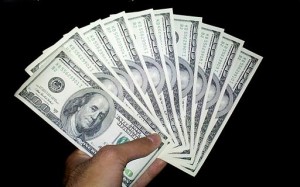 The majority of students graduating from college are saddled with student debt. The amounts vary, but the average debt for college seniors carrying student loans in 2012 was $29,400. Some have less debt and others have far more, particularly those who have attended private, for-profit institutions where the average debt was $39,950 in 2012. Of course, many students then choose to attend graduate school, which carries higher tuition that frequently adds tens of thousands of dollars onto the debt.
The majority of students graduating from college are saddled with student debt. The amounts vary, but the average debt for college seniors carrying student loans in 2012 was $29,400. Some have less debt and others have far more, particularly those who have attended private, for-profit institutions where the average debt was $39,950 in 2012. Of course, many students then choose to attend graduate school, which carries higher tuition that frequently adds tens of thousands of dollars onto the debt.
Not surprisingly, student loan debt is often the largest debt that an individual carries (particularly if he or she doesn’t own a home). It’s a debt that can eat away at monthly income and make it hard to cover every day living expenses. The point is, student debt is a huge financial strain, and one that pushes many to consider bankruptcy. Unfortunately, getting rid of student loans in bankruptcy proceedings is very difficult, though not impossible, as many commentators claim.
Generally, liquidation forms of bankruptcy discharge remaining debts after assets have been sold off and the proceeds distributed to creditors. However, the Bankruptcy Code provides a number of exemptions from discharge, among them being “qualified educational loans,” including government, nonprofit, and any other loans. 11 USC 523(a)(8). There are exceptions to that rule, however, including the “undue hardship exception” and “unqualified loan or institution” exceptions.
Undue Hardship Under 11 USC 523(a)(8)
11 USC 523(a)(8) provides that student loans can be discharged in bankruptcy if they “would impose an undue hardship on the debtor and the debtor’s dependents.” You may be thinking this sounds pretty easy. You’re barely able to pay your bills because of your student loans, so that’s an undue hardship, right? Wrong.
Courts have adopted a very strict definition of what constitutes an undue hardship known as the Brunner test. Among other things, the debtor must show that the hardship he or she is experiencing is likely to last for a substantial portion of the term of the loans. The life of loans is often 20+ years, so this is a very difficult showing. An accident that leaves a debtor paralyzed and unable to work might qualify, but a job that doesn’t pay enough to cover loan payments would not.
Unqualified Institution Under Bankruptcy & IRS Codes
The second major exception that allows for the discharge of a student loan under specified circumstances relates to the qualifications of the educational institution the debtor attended. For a loan to be a non-dischargeable “qualified educational loan” under 11 523(a)(8), it must meet the IRS’s definition of the term set out in section 26 USC 221(d)(1).
In short, a “qualified educational loan” is one used to pay a “qualified educational expense,” which is an expense used to pay for attendance at an “eligible educational institution.” There are many private, for-profit schools that are arguably not “eligible educational institutions,” and thus debts accrued for attendance may be eligible for discharge in bankruptcy proceedings.
Questions?
If you have questions or don’t completely understand the exceptions, we understand. It’s a complicated area of law and we’re here to help. Let the experienced bankruptcy attorney at Semmes Law Firm answer your questions about student loan debt or bankruptcy in general.
